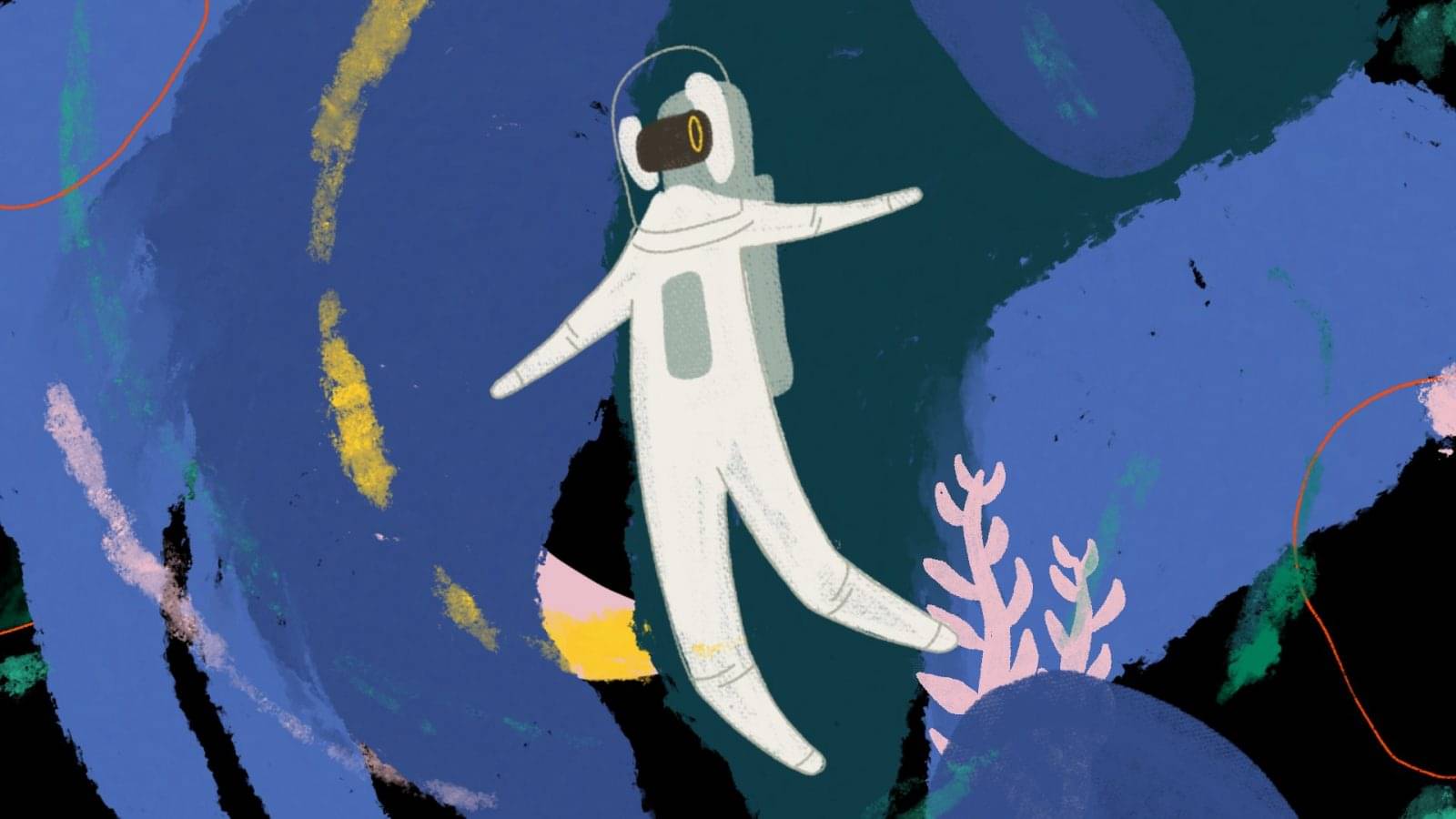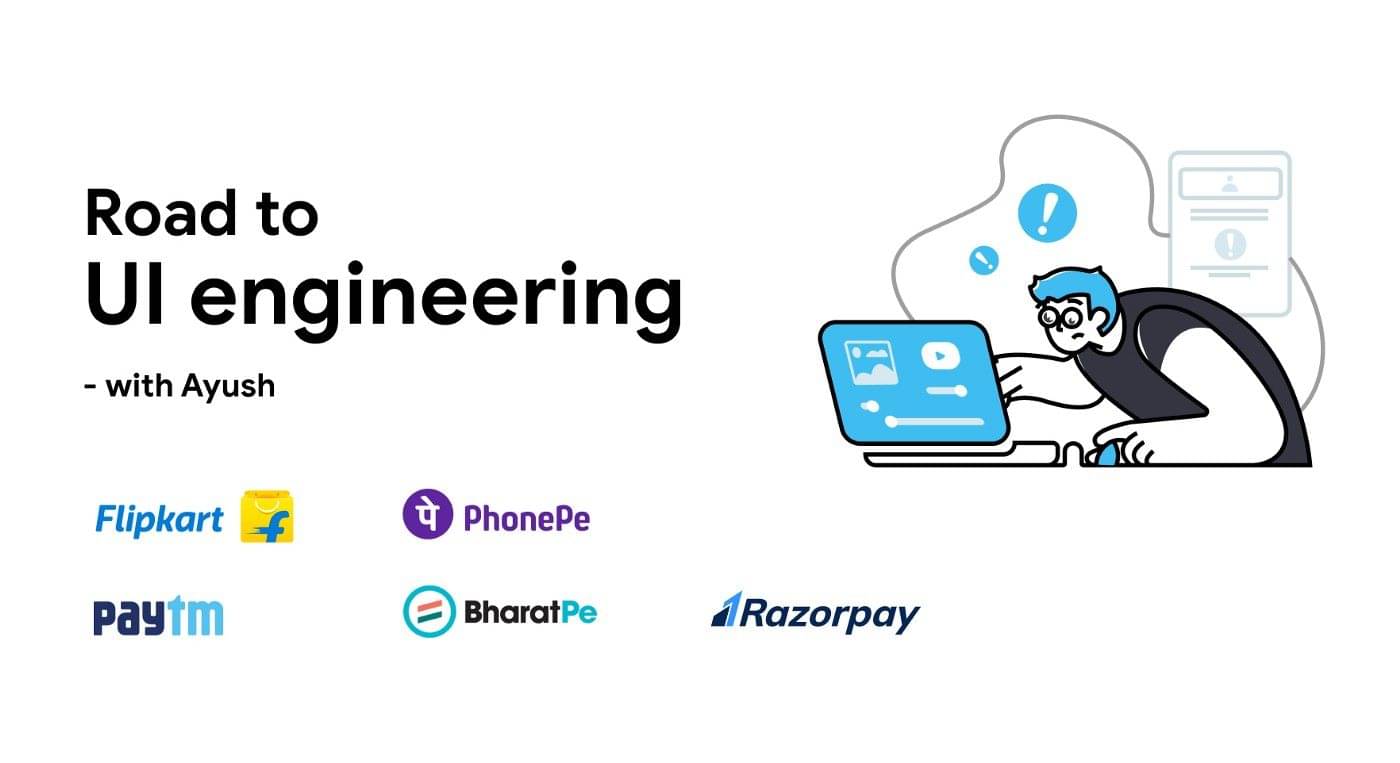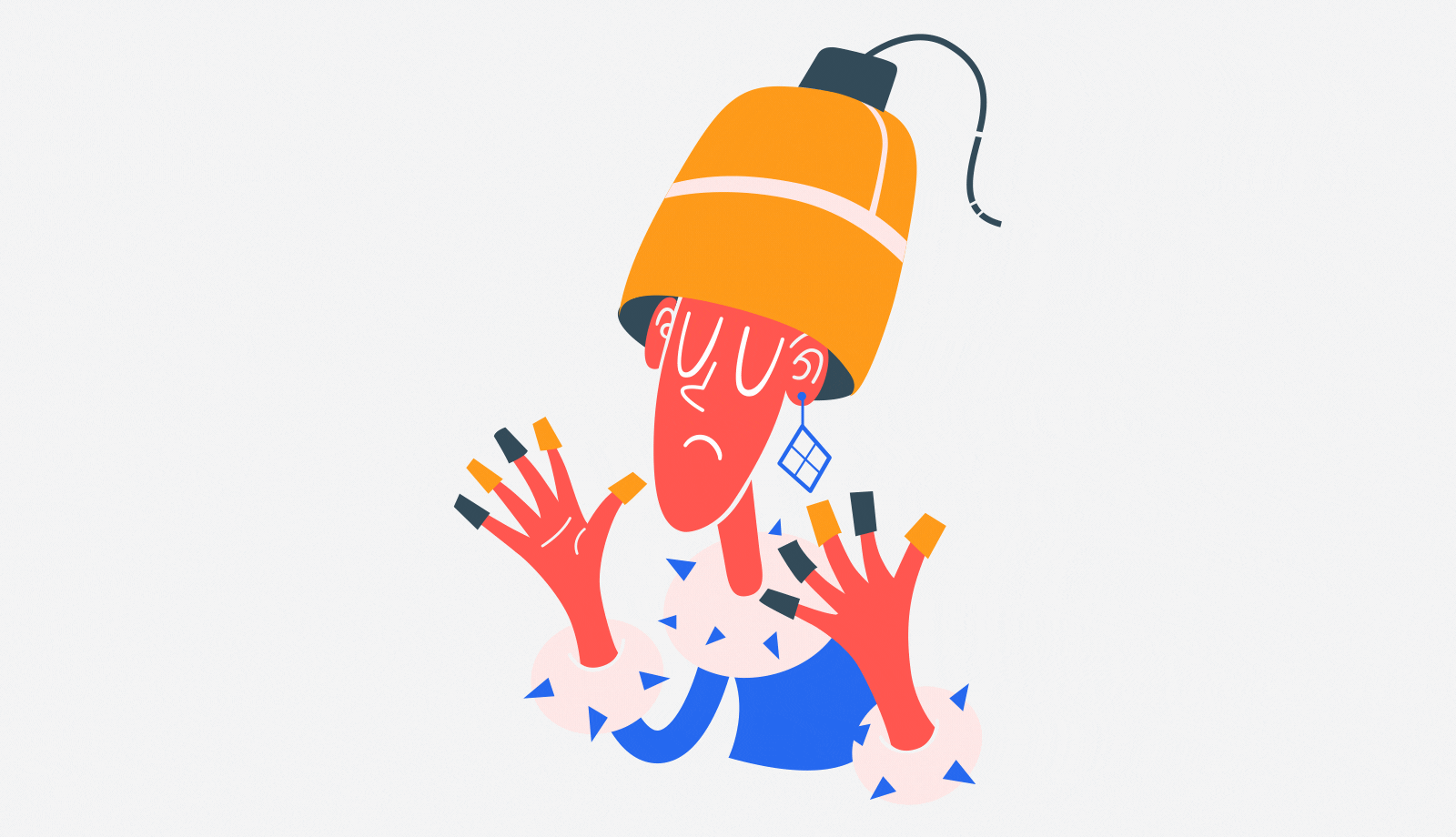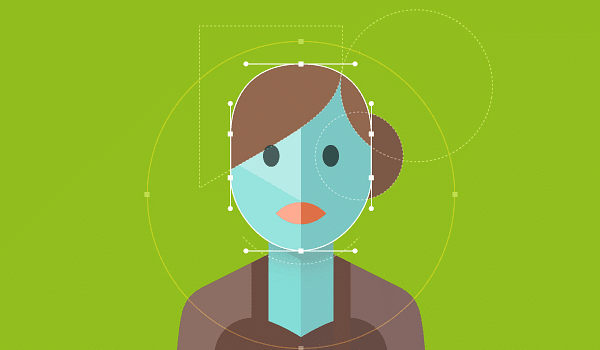
The Source is a fortnightly letter from Prototypr for its community of ~600k viewers. Written by Sophie Clifton-Tucker, The Source tackles taboo topics, exposes unseen truths, and gets the scoop on the latest in the tech and design sphere. Credit to Two Toes Creative for this issue’s illustration!
Freelance services such as UpWork, Freelancer and Guru have long since been popular platforms for designers on the hunt for work. Some mavericks have decided to fly solo, using their own personal platform to accept client jobs. (Read on for interviews with creators who have taken the plunge and set up their own successful design services!) But what happens when this works a little too well?
Knowing how to successfully scale your client base is imperative; too few, and its instant noodles for dinner for the rest of the month. Too many, and you might find yourself sitting on a powder keg as you try to juggle increasing demands with a very finite amount of hours in the day.
Delivering design needs designers. Delivering design at scale needs lots of designers.– Chris Thelwell on Medium
And then there’s navigating the murky waters of what to charge; you should absolutely know your worth and charge appropriately (something we spoke about in our article Freelancing Shouldn’t Be Free: Here’s How to Get Paid, and which Nicole Alexandra Michaelis succinctly backs up in her article Why I charge you $200 an hour as a freelance UX writer), even if that means charging slightly more and accepting fewer clients to cover your overheads. Whilst tiered payment plans have proven effective, don’t let attractive pricing lead you down the hazardous path of overfilling your plate.
Read all about it:
- Scaling up and scaling back: Brett of Design Joy fame (formerly Hue) came under fire recently for overpromising and underdelivering. Whilst having a surge of clients is a great problem to have, being unable to uphold your end of the deal is rather less so. But, turning lemons into lemonade, Brett shared the ups and downs of his design service journey via a Twitter thread and YouTube podcast with Talkflow, including how he aimed to rectify the pickle he’d got himself into, which involves capping his clients.
The Truth Behind DesignJoy (How It Actually Works) - When design services go right: Speaking of pickles, one service that seems to have hit the sweet spot is Design Pickle, a global creative services company that provides businesses with unlimited design and illustration work at a flat rate. Design Pickle grew from humble roots as one-man-band Russ Perry took the company from zero to 6 figures in under 3 years. Another person who has successfully launched their own design service is Hermione Gogu with Phasma; more on this later!
- Upwork for Freelance Designers: Last year, Upwork announced the launch of their Project Catalog™; similar to their Talent Marketplace, this catalog helps designers, for example, to neatly package predefined projects ready for purchase (how’s that for a bit of alliteration?). This redefined way of showcasing designers’ capabilities helps to manage client expectations and eliminate the usual back-and-forth; you’re essentially getting what it says on the tin.
- 99designs, 1 winner: 99designs is a graphic design service by popular marketing and printing company Vista. One of the ways in which designers and clients are matched is through ‘contests’, whereby the client produces a brief with a cash prize, and designers from all over the world compete by submitting suitable artwork. But in the end, there can be only one winner, meaning the last designer standing in this Battle Royal-esque competition is the only one who is remunerated for their hard work. Is it worth it? Yes! Providing you’re the client…or the winner.


Letter
Designers doing their thing:
A brief interview series with some of the creators who have successfully branched out into their own projects, how they did it, and why.
TinyFaces: From Design Systems to ‘NFT Design Systems’

TinyFaces: A designer/developer’s journey from Design Systems to ‘NFT Design Systems’ – TinyFaces helps us develop an understanding of the crypto space from a designer’s perspective, run in collaboration between Maxime De Greve, developer and artist behind the 3D characters, and Filippo Chiumiento, designer who looks after the branding and other digital communications.
In the first of many interviews for Prototypr’s ‘Crossover Series’, we interview Maxime to find out a little more about the NFT design process, how it differs from their previous design job, and parallels with Web2. Check it out!

Two Toes Creative: 2 Friends Creating a Design Studio

Two Toes Creative: Two Toes Creative is a new design and animation studio for the unordinary. Their work is the amalgamation of brilliant motion and storytelling by Tala Schlossberg, and thoughtful illustration and design by Kika MacFarlane. Together they make animated videos, illustrations, and creative campaigns and have worked on projects for the NYTimes, and independently have worked on projects for Patagonia, Target, YETI, Climate Power, to name but a few.
How did Two Toes come to be?
“We have been creatively collaborating since 2018, and although finding successful careers on our own, we just couldn’t deny how much stronger our creative was and better our ideas were when we worked together. We had the perfect complimentary skill set for a design & animation studio, and a friendship that we knew would translate into a working environment we both craved. We also wanted to put more of the things we love to make out into the world.”
We’re big believers in absurd, out-of-the-box visuals that feel human, instead of just following current design trends.– Two Toes
What was the point at which you thought this could really work, and knew it was time to take the leap?
The move to remote work culture really helped us realize how plausible it was, as we live across the country in Wyoming & New York. We also have both worked in agency environments and with other agencies as contractors, and getting to see how they structured themselves and ran their work was really helpful.
How do you plan to make your agency sustainable, and how would you manage demand as you grow?
We plan to be selective with the projects we work on, and make sure we’re taking on clients who value us for our visual output and our unique collective voice. We’re moving forward with the plan to do less projects overall, but make sure each one is meaningful and right for us. As we scale, we’re excited to thoughtfully build a team that prioritizes design and creative, but also places importance on the business and strategy side too.
Any advice for designers who want to start their own thing?
“Take the leap! The hardest part is trusting yourself and your skills, but the minute you believe in yourself your community will too. Make exactly what you want to make. Post all the designs you think are too weird and different. Lean into making things you’ve never seen before, and don’t try to force yourself to be anything you’re not. The world needs your ideas!”
For more on their venture, follow Two Toes, Tala, and Kika on Twitter.

Phasma: Building a sustainable unlimited design model

Phasma: Product designer Hermione Gogu launched her very own design studio last month, offering ‘unlimited design requests for companies that build tech for good’. Her designs are industry-specific, covering a range of fields from medical, veterinary, pharmaceuticals, charities and more. Simply subscribe, list your tasks, and receive your designs!
What is a productised design service and how is it different from freelancing?
Productised design is a service package that someone can buy for a fixed price. It has a clear scope, combined with standard due dates and defined benefits and deliverables. The difference with freelancing is not the work you will do but the way you will do the work. On a productized design service, you put your freelance design skills in a more attractive and targeted to the client packaging and you address their specific pain points.
What is different about Phasma, and why did you start it?
I started Phasma, because of two reasons: First, I want my designs to have an impact on the world. That’s why I only design for companies that build tech for a good purpose. Secondly, I knew I could deliver value to my clients. I help them save time and money, while I deliver high-quality designs for their specific needs.
I’m working by myself and focusing on my niche.
What makes Phasma different is essentially all the above. I’m working by myself and focusing on my niche; healthcare, medical, non-profit, and any other company that makes the world a better place.
Is there a limit to unlimited designs? (do clients understand that you can only do so much work) and how do you make it sustainable?
There’s no limit, in the sense that they can list as many tasks as they want to. I only do one task at a time though. This helps things not get chaotic, but it also ensures a healthy and consistent relationship between me and the client, because they also have to get involved and review my work. Then it’s your choice to make it sustainable and for each person, it differs based on the circumstances. Some people will start hiring, others will raise the prices and some like me, have a cap on the clients they take. For example, I take approx. 4 clients per month to ensure my peace of mind.
“Solo productized design service is not sustainable.”
First, it’s your choice to make it sustainable.
Second, for most of us that have just started with such a service, the struggle is not to have TOO MANY clients, the struggle is to have ANY clients.
— Hermione Gogu (@hermionegk) April 25, 2022
Another related read:
goKampus: Steffie Jessica and Nathaniel Biancaputra are an ambitious couple who decided to take a leap of faith in their career by building a design team from scratch in the edu-tech industry. Steffie, who previously worked in a design agency, and Nathan, who worked in a unicorn startup, summarise their journey to building the foundation of a functioning UX team in 5 important steps.

Prototypr roundup 🌎
- How to find what drives you as a designer: Why did you become a designer? And what’s kept you here? Peter Cho explores ambition, ego, and self-reflection as he ponders on what drives our deepest design career desires.
- Designing localisation-friendly products: Cassandra Tang dissects what makes good localisation, and why considering different mindsets and cultures for your product can prevent you from looking like a ‘silit’.



Design events to look out for 👀

UX Design: How to build design systems to scale. 4th May
A webinar exploring: 👉 The concept of design systems 👉 Why are design systems important? 👉 Elements of a design system 👉 Key steps to building new design systems.
Config: A global design conference by Figma. 10-11 May
A 24-hour-long event exploring culture & connection, design & craft, design systems, and full to the brim with design-packed goodness.

The Future of Design Systems. 23rd-25th May
An online conference to bring together the community around design systems, and design tools, covering topics such as how to create a multi-brand design system for existing products and establishing design ops at your organisation.

Thanks for reading, if you loved this, let us know on Twitter, and sign up to the newsletter to hear about our new upcoming platform. 👇




 Buy me a coffee
Buy me a coffee



